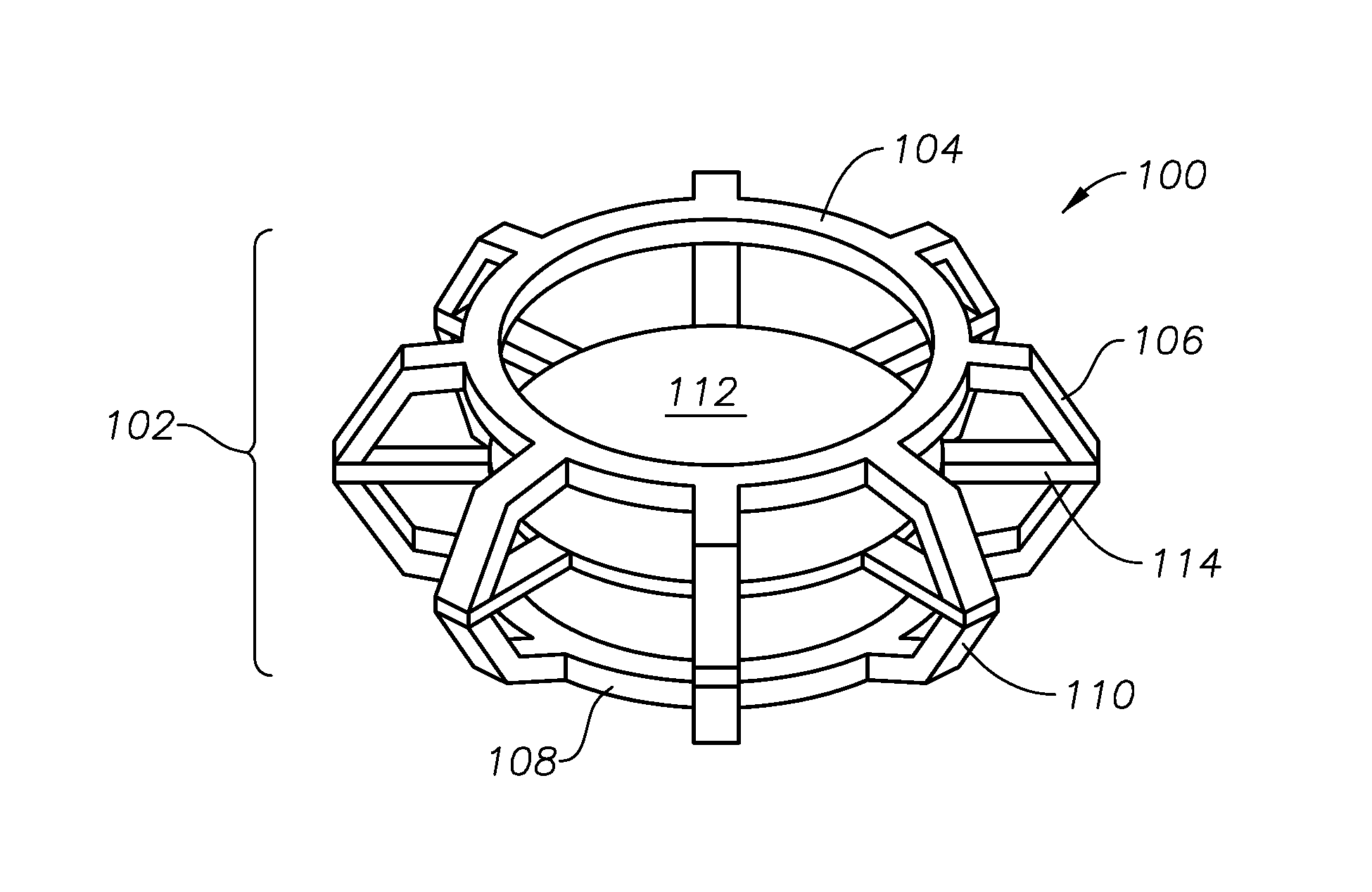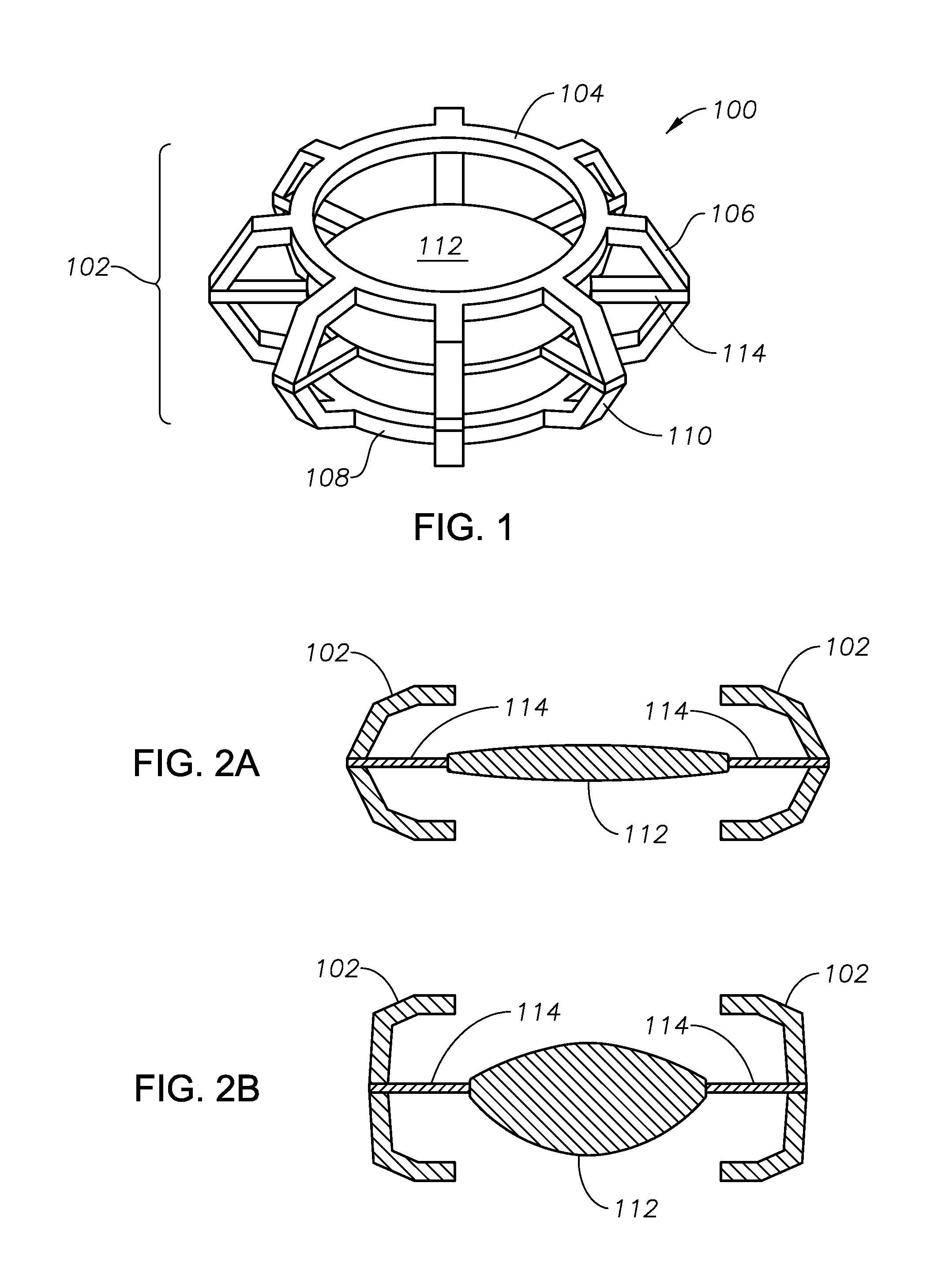Accommodating intraocular lens
a technology for accommodating intraocular lenses and lenses, applied in intraocular lenses, medical science, prosthesis, etc., can solve the problems of deteriorating vision, increasing the difficulty of use, and natural lens prone to flattening
- Summary
- Abstract
- Description
- Claims
- Application Information
AI Technical Summary
Benefits of technology
Problems solved by technology
Method used
Image
Examples
Embodiment Construction
[0012]As shown in FIG. 1, an accommodating intraocular lens 100 includes a haptic assembly 102 including an anterior ring 104 with anterior spring arms 106, a posterior ring 108 with posterior spring arms 110. Transparent windows (not shown) may be placed within either or both of the anterior ring 104 and posterior ring 108. The lens 100 also includes flexible optic 112 that is connected to the haptic assembly 102 by support struts 114. The anterior spring arms 106, the posterior spring arms 110, and the support struts 114 may be equally spaced around the flexible optic 112. The haptic assembly 102 is adapted to maintain the general shape of the capsular bag when implanted therein, which helps to maintain the mechanical operation of the capsular bag. The flexible optic 112 may be any soft optic that can be stretched by tension on the support struts produced by transfer of axial force to the haptic assembly. For example, the flexible optic 112 may be a fluid- or gel-filled membrane o...
PUM
 Login to View More
Login to View More Abstract
Description
Claims
Application Information
 Login to View More
Login to View More - R&D
- Intellectual Property
- Life Sciences
- Materials
- Tech Scout
- Unparalleled Data Quality
- Higher Quality Content
- 60% Fewer Hallucinations
Browse by: Latest US Patents, China's latest patents, Technical Efficacy Thesaurus, Application Domain, Technology Topic, Popular Technical Reports.
© 2025 PatSnap. All rights reserved.Legal|Privacy policy|Modern Slavery Act Transparency Statement|Sitemap|About US| Contact US: help@patsnap.com


